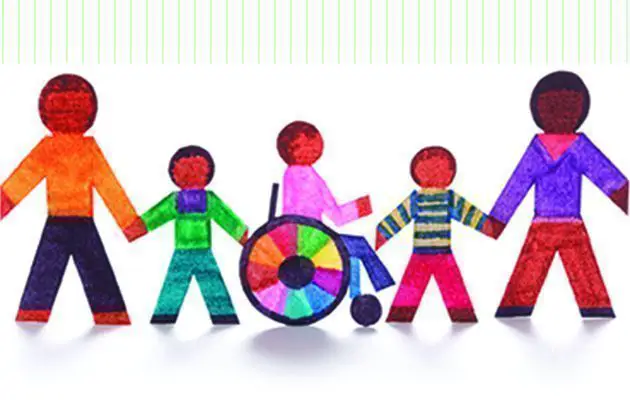Receiving a special needs diagnosis for your child can be overwhelming. Here are seven steps to follow that will put you on the right path from the beginning.
When your child is diagnosed with a condition or a developmental challenge, parents naturally want to learn more about how to help their child. A few common questions that parents will have are: “How serious is this?” “Will they outgrow it?” “How much and what kind of intervention will we need to do?”
These are the questions that I commonly field in my daily practice as a pediatric neuropsychologist. The vast majority of children I see in my practice fall into certain categories of disabilities. When I conduct assessments, I will then “debrief” their parents about the test results and share my impressions, which most often include recommendations for treatment. Although it’s often difficult for parents to handle receiving the news about a diagnosis, the truth is that diagnoses help both parents and professionals understand how to best treat the child’s condition. And most conditions have standard recommendations for treatment. While most interventions are not particularly glamorous or exciting, they are scientifically based and have been found to be effective for a particular condition. But treatment might be tedious, slow or parents might question if this is the best they can do for their child.
RELATED: How to Discuss Your Child’s Diagnosis with Your Child
At times some parents soon become dissatisfied. Often, parents often want more. Or better. Or don’t trust the standard of care, especially when it involves medications or multiple hours per week of therapy or tutoring. They want to find out for themselves what their alternatives are. In this information age, parents can learn quite a lot about their child’s condition without being trained in a particular area of development. It’s all available on the Internet. But, only if you know where and for what to look.
Let’s explore the brain of a typical parent for a moment. When a parent learns that their child might have a problem, the Search and Find system in their brain lights up, located in their neocortex, the reasoning and planning system of their brains. This site tells them: “Earth to parent! There is a problem. We will search and find the cure for this problem!” Solving problems, large and small, and seeking solutions are a natural part of a parent’s daily life. For example, parents of atypical kids might do some research and find some claims that their child’s developmental disability can be treated by a special diet or an alternative breakthrough treatment featured in the news or found on the Internet.
But how to tell what’s helpful and what is slick commercial for-profit schemes?
Learning how to spot phony research claims can be confounding. Even the most sophisticated parent can be taken in by some of the wild and wonderful claims made by some websites advertising “cure-all” treatments and supplements for children.
What to do? Here is a list of steps:
1. Take care of yourself first.
An emotionally flooded brain is not an effective brain. When your prefrontal cortex is hijacked by your fears, worries, and anger, it is difficult to solve problems. Take time to calm yourself. Don’t run to the Internet when your worry brain is leading the way. Breathe. Climb inside yourself for a moment. Are you hurting? Feeling angry? Burned out by too many fruitless therapies? Overwhelmed by the list of to-dos? Still reeling from a bad tantrum day? Maybe now is not the time to do more searching. Maybe now is the time for that bubble bath or a vigorous exercise class or teatime with your gal pals. Calm your brain.
RELATED: Managing Your Emotions After Your Child’s Special Needs Diagnosis
2. Search intelligently.
Now that your mind is calm, focused and coherent because you have taken care of your needs, you are ready to investigate. First, start with your own treatment team. Go back to the professionals that you know and who know your child and ask them your questions. Write down their responses, because you might not remember it all. In fact, now is a great time to buy that small notebook to keep notes and take to all of your meetings. As parents, you have a right to ask as many questions as you need from your treatment team. If you are still in the process of assembling a treatment team, ask your diagnostician what are the questions you should be asking.
3. Know what you’re looking for and seek assistance.
Are you still on the market to find alternative treatments? Or want to know if the miracle supplement sold at your nearest mini-mall is legit? Find out! Contact your local university or the nearest university with a department specializing in your child’s condition. Ask for someone who will help you wade through research on your child’s condition. For a fee, you could hire a medical researcher to help you reach conclusions about what is most effective for your child.
4. Beware overblown claims.
Be skeptical of a treatment that claims to cure everything from dyslexia to ADHD to bipolar disorder to low self-esteem. As far as I know, there is no single remedy for everything.
5. Learn to spot phony research claims on the Internet, TV, and in the print media.
Who is backing up these claims? What reputable sources stand behind these claims? What is the actual evidence that the treatment really works? Remember, anyone can call himself or herself a doctor, even someone with a PhD in an area unrelated to your child’s condition.
6. Find a team of professionals whom you can trust.
In some cases, people who claim to be ‘experts’ have limited experience and a lot to gain monetarily from enlisting your confidence. Don’t mistake salesmanship for expertise. When in doubt, ask your primary physician for guidance.
7. Above all, be patient with your child’s progress.
Children develop at their own pace and should respond to treatments, but progress might be slower than you expect. Just like typical growth. It happens slowly yet surely.




















